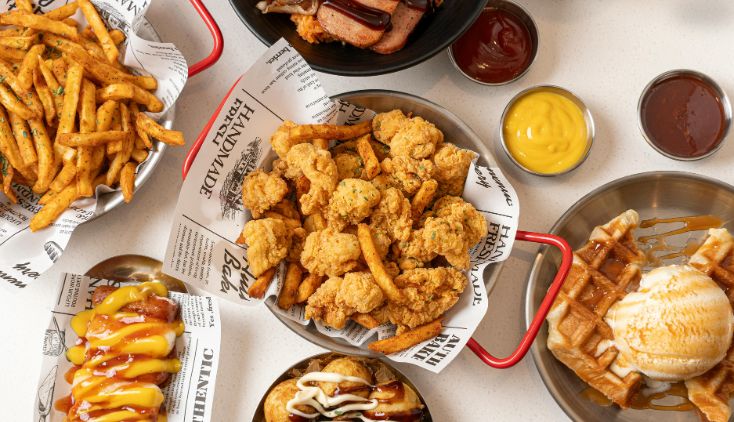8 Foods to Avoid to Help Manage High Cholesterol
High cholesterol can quietly damage your arteries, increasing the risk of heart disease and stroke. While genetics and exercise play roles, diet is one of the most powerful tools you have to keep cholesterol levels in check. By cutting certain foods out of your meal plan, you can significantly reduce your “bad” LDL cholesterol and boost your overall heart health. Not sure what foods to avoid to help manage high cholesterol? Keep reading.
Many of the foods to avoid to help manage high cholesterol are ones you might enjoy every day: think crispy bacon, creamy cheese and delicious pastries. These items are often loaded with saturated fats and harmful trans fats that raise your LDL while lowering your “good” HDL cholesterol. Understanding which foods are the biggest offenders will help you make smarter choices at the grocery store and on restaurant menus.
Below, we explore eight common culprits that can sabotage your cholesterol goals. For each, you’ll learn why it’s best left off your plate and how it can negatively impact your blood lipid levels.
1. Sizzling Offenders: Bacon, Sausages and Other Processed Meats
Processed meats like bacon, ham, sausage and hot dogs are high in saturated fat and often loaded with sodium. Saturated fat raises LDL cholesterol, causing plaque to build up in your arteries. Regular consumption of processed meats is linked to increased risk of heart disease and high blood pressure. If you want a lean breakfast option, skip the bacon and opt for a vegetable omelet or turkey slices with minimal added fat.
2. Creamy Companions Gone Bad: Full-fat Dairy Products
Whole milk, cream, butter and full-fat cheese contain large amounts of saturated fat. When consumed in excess, these dairy staples can elevate LDL cholesterol levels and contribute to arterial plaque. Even a small serving of full-fat cheese can deliver more than 5 grams of saturated fat. To protect your heart, switch to low-fat or fat-free milk and cheese, and use plant-based alternatives when possible.
3. Crunch Dangers: Fried Foods
French fries, fried chicken and onion rings are common comfort foods, but they’re often cooked in oils that are high in trans fats or reused multiple times. Trans fats not only raise LDL cholesterol but also lower HDL cholesterol, creating a double threat. If you love the crunch, choose air-fried options or roast vegetables with a light spray of olive oil instead.
4. Sweet Traps: Baked Goods and Pastries
Cakes, cookies, doughnuts and pastries frequently contain both saturated fats (from butter or palm oil) and trans fats (from shortening). A single doughnut can have upwards of 5 grams of saturated fat and hidden trans fats, spiking your LDL levels. Rather than reaching for a bakery treat, try fresh fruit with a sprinkle of cinnamon or homemade muffins made with whole-grain flour and applesauce.
5. Spreads That Spread Cholesterol: Margarines and Trans-fat Spreads
Some margarines and spreads list “partially hydrogenated oils” on their labels. This is another name for trans fats. These harmful fats increase LDL cholesterol and can trigger inflammation in the body. Look for trans-fat-free spreads or choose heart-healthy olive oil or avocado as a base for your toast and sandwiches.
6. Red Flag Meats: Fatty Cuts of Beef and Pork
Higher-fat cuts of red meat—such as ribeye steak, pork belly and lamb chops—are significant sources of saturated fat. Frequent consumption can lead to a rise in LDL cholesterol. If you love red meat, limit portions to 3–4 ounces and pick leaner cuts like sirloin, tenderloin or ground turkey. Grilling or broiling helps reduce excess fat compared to pan-frying.
7. Drive-thru Heartbreakers: Fast Food Sandwiches
Burgers and sandwiches from fast food chains are often made with fatty beef patties, cheese slices, creamy sauces and white buns—an unhealthy combination that spikes cholesterol. Even a single drive-thru meal can pack more saturated fat than you need in an entire day. When eating out, choose grilled protein, whole-grain bread and load up on lettuce and tomato instead of cheese and mayo.
8. Hidden Hazards: Packaged Snacks with Hydrogenated Oils
Chips, crackers and microwave popcorn can contain partially hydrogenated oils—trans fats that quietly elevate LDL cholesterol while reducing HDL. These snacks are easy to overeat and offer little nutritional value. Keep your pantry stocked with raw nuts, seeds or air-popped popcorn tossed with herbs for a satisfying, cholesterol-friendly alternative.
Power-Packed Swaps: Heart-healthy Alternatives
Replacing high-cholesterol foods with nutrient-rich options is key to managing high cholesterol. Here are some swaps to try:
- Lean proteins. Fish (especially fatty types like salmon), skinless poultry, beans, lentils and tofu provide protein with less saturated fat.
- Plant-based milks. Almond, soy and oat milks are naturally free of cholesterol—choose unsweetened versions.
- Healthy fats. Olive oil, avocado, nuts and seeds deliver monounsaturated and polyunsaturated fats that support good cholesterol.
- Whole grains. Oats, barley, quinoa and brown rice have soluble fiber, which helps lower LDL cholesterol.
- Crunchy snacks. Air-popped popcorn, veggie chips baked in the oven or a handful of almonds satisfy cravings without the cholesterol hit.
By steering clear of these cholesterol-raising foods and incorporating heart-healthy alternatives, you can take control of your cholesterol levels and work toward a healthier heart. Small, consistent changes in your eating habits can yield big benefits over time—your arteries will thank you!
